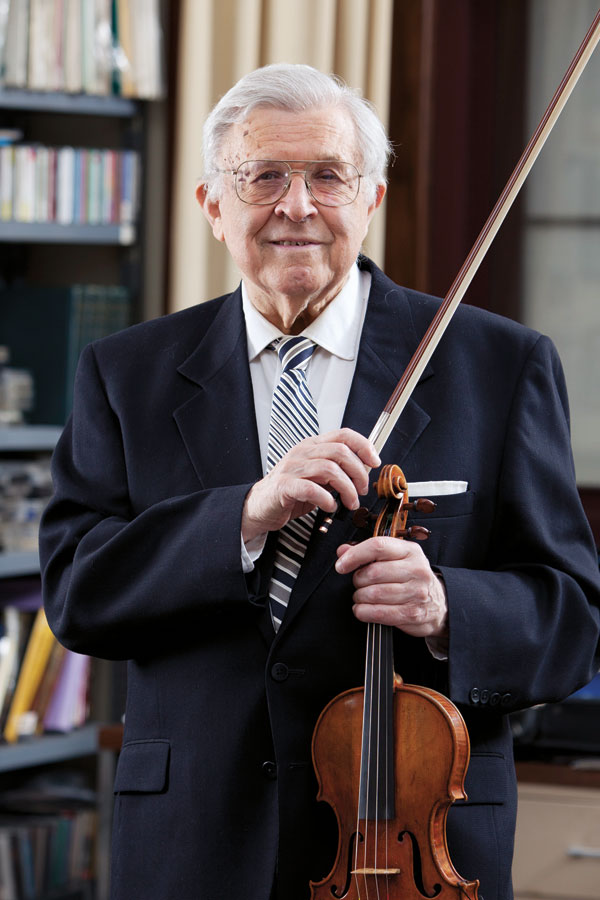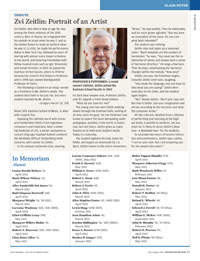Tribute
 PROFESSOR & PERFORMER: A noted concert violinist, Zeitlin joined the Eastman School faculty in 1967. (Photo: Kurt Brownell for the Eastman School)
PROFESSOR & PERFORMER: A noted concert violinist, Zeitlin joined the Eastman School faculty in 1967. (Photo: Kurt Brownell for the Eastman School)Zvi Zeitlin, who died in May at age 90, was among the finest violinists of the 20th century. Born in Russia, he emigrated with his parents to Israel when he was 2, and to the United States to study at Juilliard when he was 12. In 1951, he made his performance debut in New York City, followed by years of touring with almost every major orchestra in the world, and fostering friendships with fellow musical icons such as Igor Stravinsky and Itzhak Perlman. In 1967, he joined the Eastman School faculty, where in 1974 he become the school’s first Kilbourn Professor and in 1998 was named Distinguished Professor of Violin.
The following is based on an essay I wrote as a freshman in Mr. Zeitlin’s studio. The student described is not just me, but every student touched by Mr. Zeitlin.
—Gregory Perrin ’12, ’12E
Room 309, Eastman School of Music, is alive with creative fire. Imposing file cabinets burst with scores and handwritten letters from legendary composers and musicians. Near a towering bookcase of LPs, a poster announces a concert long ago: Raphael Kubelic conducts the devilishly difficult Schoenberg violin concerto, with soloist Zvi Zeitlin.
In his antique cushioned chair, wearing his dark blue sweater vest, Professor Zeitlin, now 87, regards a fresh-faced student.
“What do you have for me?”
The young man has seen Zeitlin walking slowly through the Eastman halls, smiling at all who catch his gaze. Yet the freshman now knows to expect the most demanding violin pedagogue, possibly in the world. A lesson may last two hours. Zeitlin gives as many lessons as he feels each student needs. Today is a Saturday. The student tightens his bow, tunes his fiddle, and begins an allemande by J. S. Bach. Zeitlin listens to the entire movement. “Bravo,” he says quietly. Then he elaborates, and his voice grows agitated.
“But you have no conception of the piece. Do you care what Bach intended?” The student says nothing.
Zeitlin rises and takes up a seasoned violin. “Bach melodies are the product of harmonies,” he says. “You must see the relationship of voices and always have a sense of harmonic direction.” He sings a few bars. Then he plays, emphasizing the harmonic changes within the melody.
“Now play!”
Visibly nervous, the freshman begins. Instantly Zeitlin interrupts, laughing.
“You speak the language, but you have no idea what you are saying!” Zeitlin demonstrates on his violin, and the student again begins.
“No!” shouts Zeitlin. “Don’t just copy me! But that is better. Use your imagination and phrase according to the harmony and what the composer wrote.”
All this criticism, distilled from a lifetime of performing and teaching at the highest levels, is painful to students. Yet any observer is likely to sense Zeitlin’s deep love—a ferocious love—for his students.
To conclude two hours of incisive instruction and commentary, Zeitlin says, calmly, “I am on your side. But I am preparing you for the people who aren’t.”

